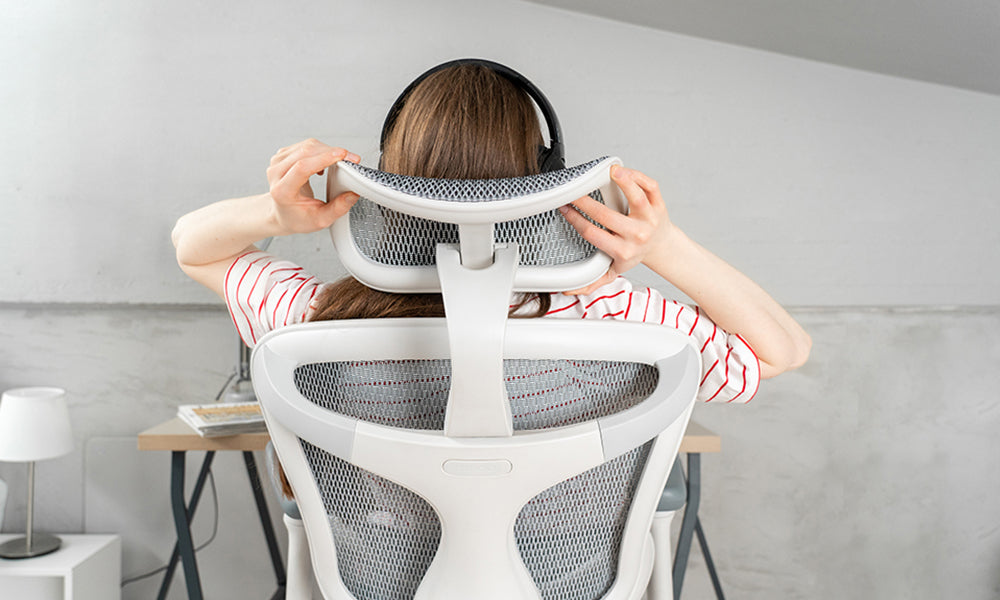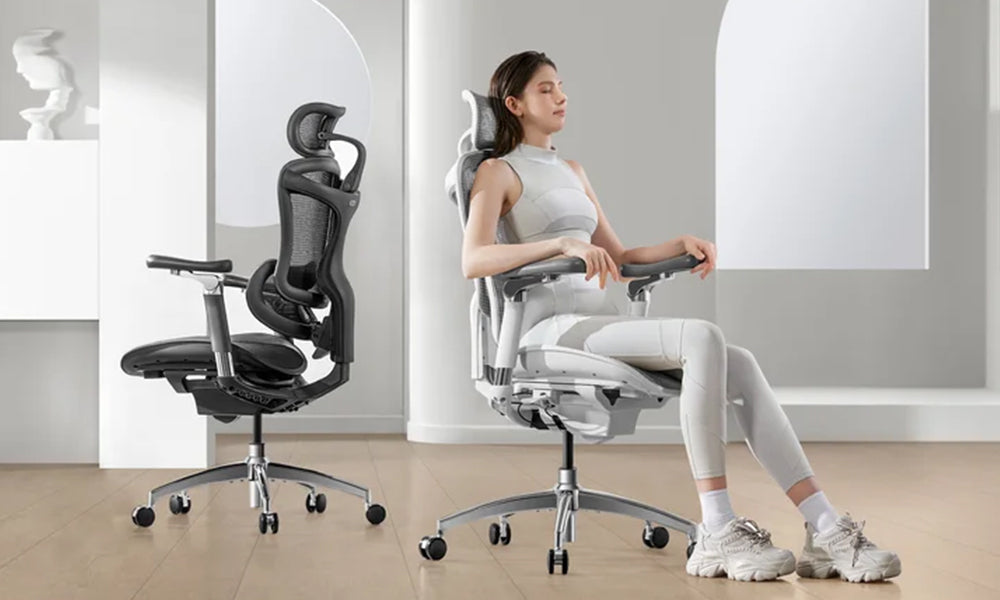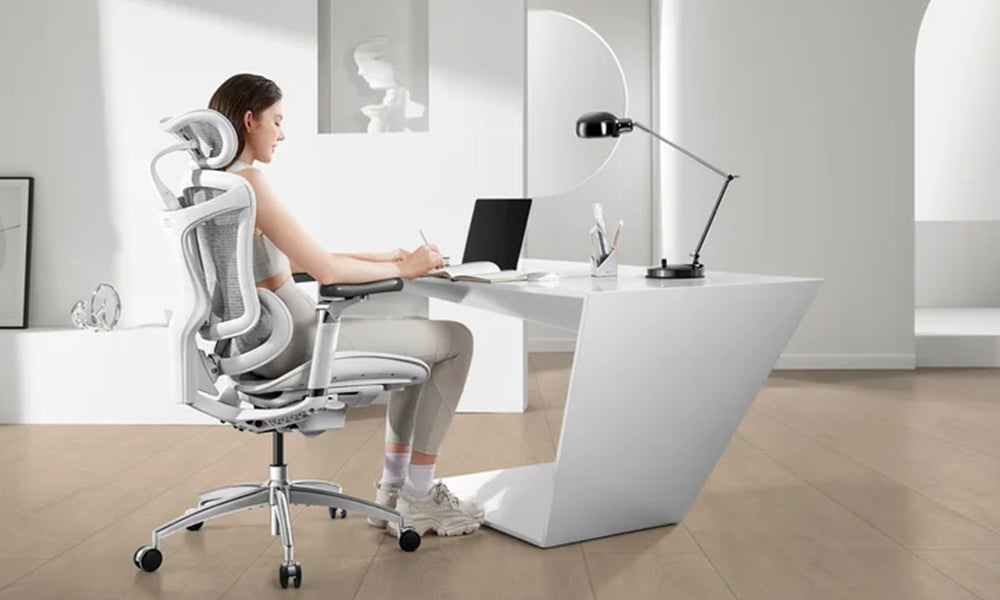Whether you're working from home or in a corporate setting, the comfort and ergonomics of your office chair can have a profound impact on your overall well-being and productivity. One essential feature often debated is the headrest. Do you really need a headrest on your office chair? In this comprehensive guide, we will explore the benefits, drawbacks, and considerations to help you make an informed decision about whether a headrest is right for your office chair.
The Importance of Ergonomics in Office Chairs
Before we dive into the headrest debate, it's crucial to understand the significance of ergonomics in office chairs. Ergonomics is the science of designing and arranging objects to optimize human well-being and overall system performance. In the context of office chairs, ergonomic design aims to create a comfortable and supportive seating environment that minimizes the risk of musculoskeletal disorders and maximizes productivity.
1.1 The Impact of Poor Ergonomics
Poorly designed office chairs can lead to a range of health issues, including:
Back Pain: Prolonged periods of sitting in chairs that lack proper lumbar support can contribute to lower back pain and discomfort.
Neck and Shoulder Pain: Inadequate support for your upper body can result in neck and shoulder strain, leading to pain and tension.
Repetitive Stress Injuries (RSI): Typing and using a computer mouse for extended periods can cause RSI, which may be exacerbated by an improper chair design.
Decreased Productivity: Discomfort and pain caused by an uncomfortable chair can reduce your ability to focus and work efficiently.
Given these potential issues, choosing an office chair with proper ergonomic features is crucial. But does this mean you need a headrest? Let's explore further.
Understanding Headrests
A headrest, as the name suggests, is an extension of an office chair designed to support your head and neck while you sit. These features are typically adjustable, allowing you to position them according to your needs. While they are common in many high-end office chairs, not all chairs come equipped with a headrest. Here are some key considerations when evaluating the importance of a headrest:
2.1 Benefits of a Headrest
2.1.1 Neck and Shoulder Support
One of the primary advantages of a headrest is the support it provides for your neck and shoulders. When properly adjusted, a headrest can help relieve tension in these areas, especially during long periods of work. This can be particularly beneficial if you spend hours on the computer or phone.
2.1.2 Reducing Strain
A headrest can help you maintain proper neck alignment, reducing the strain on your neck muscles and preventing the development of discomfort or pain. It can also be beneficial when you take short breaks to lean back and relax.
2.1.3 Improved Relaxation
During breaks or moments when you want to relax without leaving your desk, a headrest can provide a comfortable resting place for your head, allowing you to recharge and refocus.
2.2 Drawbacks of a Headrest
While headrests offer several benefits, they may not be suitable for everyone, and there are some potential drawbacks to consider:
2.2.1 Limited Chair Styles
Not all office chairs are designed to accommodate a headrest. If you have a specific chair style in mind or are using a chair that does not have a headrest, you may face limitations in your options.
2.2.2 Cost
High-quality ergonomic chairs with adjustable headrests can be expensive. If you are on a budget, the additional cost of a headrest may be a significant factor.
2.2.3 Personal Preference
Some individuals find headrests uncomfortable or unnecessary. It's a matter of personal preference, and what works best for one person may not work for another.
Factors to Consider When Deciding on a Headrest
Whether you should have a headrest on your office chair depends on various factors, including your individual needs and preferences. Here are the key factors to consider when making this decision:
3.1 Body Type and Size
Your body type and size play a crucial role in determining whether a headrest is necessary. Taller individuals may benefit more from a headrest as it provides better support for their longer necks. Conversely, shorter individuals may find that a headrest is less important for their comfort.
3.2 Work Habits
Consider your work habits and daily tasks. If you spend long hours on the computer or engage in tasks that require you to look down frequently, a headrest can help reduce neck strain and fatigue. However, if your work primarily involves standing or other activities, a headrest may be less important.
3.3 Existing Health Conditions
Do you have any existing health conditions, such as chronic neck pain or a history of neck-related issues? If so, a headrest may be highly beneficial in providing support and reducing discomfort.
3.4 Chair Compatibility
As mentioned earlier, not all chairs are designed to accommodate headrests. If you already have an office chair and are considering adding a headrest, check whether your chair allows for this modification.
3.5 Budget
Consider your budget when evaluating the need for a headrest. High-quality ergonomic chairs with adjustable headrests can be expensive. If cost is a concern, you may need to prioritize other ergonomic features.
The Headrest Decision-Making Process
Now that you have a better understanding of the factors to consider, here's a step-by-step process to help you decide whether you need a headrest on your office chair:
4.1 Assess Your Needs
Start by assessing your specific needs. Consider your body type, work habits, and any existing health conditions that may require neck and shoulder support.
4.2 Try Different Chairs
If you're in the market for a new office chair, try out several chairs with and without headrests. Pay attention to how each chair feels and whether the headrest provides the comfort and support you desire.
4.3 Consult Ergonomics Experts
If you have access to an ergonomics expert or consultant, consider seeking their advice. They can provide personalized recommendations based on your unique requirements.
4.4 Experiment with Accessories
If you already have an office chair without a headrest, explore accessory options. Some aftermarket headrest attachments can be added to existing chairs, providing a cost-effective solution.
4.5 Budget Considerations
Determine your budget for an office chair. If you're open to investing in a high-quality ergonomic chair with an adjustable headrest, weigh the benefits against the cost.
4.6 Consider Alternative Solutions
Keep in mind that a headrest is just one aspect of ergonomic comfort. Ensure your chair provides proper lumbar support, adjustable seat height, and other features that promote good posture.
Maintenance and Proper Usage
If you decide to go with a chair that has a headrest or add one to your existing chair, it's essential to know how to use and maintain it correctly:
5.1 Adjust Properly
Once you have a chair with a headrest, take the time to adjust it correctly. The headrest should be at a height that supports the natural curvature of your neck. Ensure that it cradles your head comfortably without forcing your neck into an unnatural position.
5.2 Frequent Breaks
Even with a headrest, it's crucial to take regular breaks from sitting. Stand up, stretch, and walk around to prevent the development of stiffness and discomfort.
5.3 Keep It Clean
If your headrest is made of fabric or cushioned material, keep it clean to prevent dirt and sweat from accumulating. Regularly vacuum or spot clean the headrest as needed.
5.4 Maintenance and Repairs
Inspect your chair and headrest for any signs of wear or damage. If you notice any issues, address them promptly. Loose or broken parts can compromise the effectiveness of the headrest and overall chair comfort.
Common Misconceptions About Headrests
There are several misconceptions surrounding headrests on office chairs. Let's debunk some of the most common ones:
6.1 "Headrests Are Only for Executive Chairs"
While headrests are commonly associated with executive or high-end office chairs, they are available in various chair styles and price ranges. You can find ergonomic chairs with headrests to suit your budget and preferences.
6.2 "Headrests Are Uncomfortable"
Some people may assume that headrests are uncomfortable, but this largely depends on the chair's design and the individual's preferences. Modern ergonomic chairs are designed to provide comfortable head and neck support without causing discomfort.
6.3 "I Don't Have Neck Problems, So I Don't Need a Headrest"
Even if you don't have existing neck problems, a headrest can help prevent discomfort and strain in the long run. Proper support is essential for maintaining good posture and overall well-being.
6.4 "A Pillow or Cushion Is an Adequate Substitute"
While adding a pillow or cushion to your chair can provide temporary relief, it may not offer the same level of support as a well-designed headrest. A dedicated headrest is specifically engineered to provide optimal neck and shoulder support.
Conclusion - Making the Right Choice
In the quest for the perfect office chair, the decision to include a headrest ultimately comes down to your individual needs and preferences. The key takeaway is that office chairs should prioritize ergonomic design to ensure your comfort and well-being during long hours of work.
To recap:
Assess Your Needs: Consider your body type, work habits, existing health conditions, and budget when deciding whether a headrest is necessary.
Try Before You Buy: If possible, test out different chairs with and without headrests to determine which one offers the most comfort and support.
Consult Experts: Seek advice from ergonomics experts or consultants who can provide personalized recommendations based on your unique requirements.
Maintain Proper Usage: Once you have a chair with a headrest, adjust it correctly, take regular breaks, and keep it clean to ensure it continues to provide the support you need.
Ultimately, the goal is to find an office chair that promotes good posture, minimizes discomfort, and enhances your productivity. Whether or not you need a headrest on your office chair should align with these objectives and contribute to your overall well-being.
In the end, the decision to invest in a chair with a headrest or add one to your current setup should be a thoughtful one that takes into account your specific needs and comfort preferences. Prioritizing ergonomics and maintaining proper posture are key factors in creating a comfortable and productive workspace.



